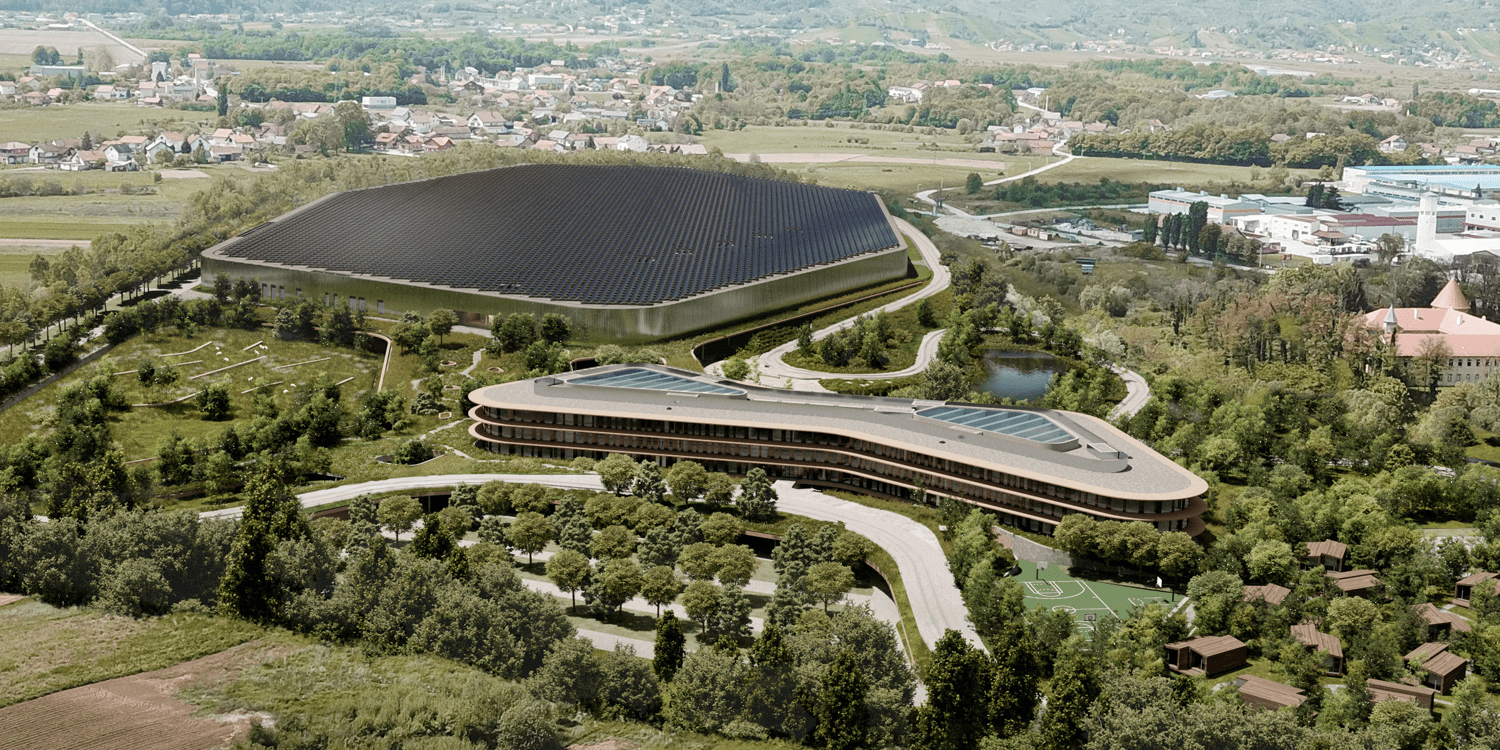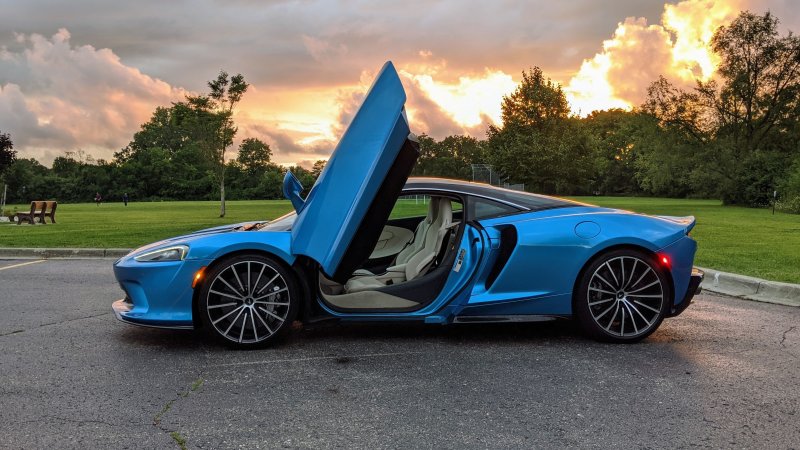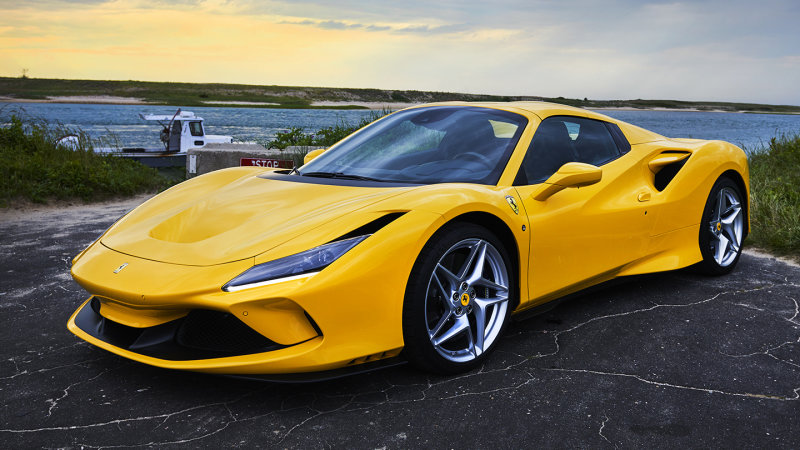Though it lacked some of the hardware bells and whistles found on the latest iPhones or other premium Android devices, last year’s Pixel 2 still took the best photos of any smartphone, despite featuring what many would consider a simple single-camera system by today’s standards. Now the Pixel 3 aims to extend its lead in mobile photography using a similar playbook.
Both the new Pixel 3 ($799+) and Pixel 3 XL ($899+) feature two 8-megapixel cameras in the front, including a new wider angle option for group selfies. But like the previous models, each variant still sports just a single 12-megapixel camera in the back, albeit with an upgraded sensor. However, more radical upgrades are found under-the-hood, in the form of Google’s exceptional AI and machine learning technology that improves the camera and powers many other cutting-edge features, including a new amazing solution for screening calls from unrecognized numbers.
In even better news, both models finally boast premier hardware specs like a glass back design for wireless charging and modern edge-to-edge OLED screens (that thankfully aren’t marred by blue tinting issues again), despite costing noticeably less than the competition. The only difference between the two size options boils down to bezels. The top of the “XL” features a fairly obtrusive notch that houses the phone’s front-facing camera array and speaker, leaving the rest of the screen free to stretch all the way to the corners. But if the look bothers you, there is an option to hide the notch via a software setting.
Speaking of software, like all Google-branded smartphones in the past, the Pixel 3 ships with the latest “pure” version of Android, meaning its free of third-party bloatware and should receive software updates as fast as Google releases them.
The Google Pixel 3 and Pixel 3 XL are available for pre-order and will officially go on sale starting October 18. They are available exclusively on Verizon or unlocked through Google directly.
|
The Good: The Pixel 3 and Pixel 3 XL are smartphones primed for photographers and Android purists, alike. Both the front and rear camera systems are better than their Pixel 2 predecessors – that’s saying a lot. And higher-quality photos and videos are now easier to capture, thanks to a bunch of new camera features (more details below). Pixels are the also only smartphones equipped with free unlimited high-res photo and video storage through Google Photos, so you don’t need to worry about running out of space. Both versions of the Pixel 3 have bigger and nicer displays, and support wireless charging finally. As for other features, there are a bunch but the coolest one is that you can have Google Assistant answer and screen calls for you; this way you don’t have to answer phone numbers that you don’t recognize. Also, at $799+ and $899+, the Pixel 3 and Pixel 3 XL are around $200 cheaper than Apple’s and Samsung’s flagship smartphones.
Who They’re For: Anybody looking for a smartphone with the best camera system. The new Pixel 3 also offers the purest and most up to date Android experience of any phone. They’re also great for anybody who is deeply invested in Google’s ecosystem of apps or growing line of smart home devices.
![]()
The Pixel 3 has a single-lens rear camera system, just like the Pixel 2, but thanks to an upgraded sensor and some pretty impressive AI and machine learning skills, the Pixel 3’s camera can capture high-quality photos and videos that other flagship smartphones can’t.
Watch Out For: Google still can’t compete with the luxurious aesthetics of Apple and Samsung, so despite being the best Pixel ever made, neither size feels or looks as nice as other flagship options. Their displays aren’t as bright or beautiful as the ones in the iPhone XS and Samsung Galaxy S9 either. A fingerprint sensor on the rear is still the only way you can biometrically unlock the Pixel 3 as well, which feels primitive now. Finally, some of the phone’s coolest touted features, like Night Sight and Driving mode, aren’t available immediately at launch. And per usual, the Pixel 3 is a Verizon exclusive, meaning if you’re tied into another carrier’s upgrade plan, you’re up the creek without a paddle.
Alternatives: Google’s flagship merits comparison to the latest flagships by Apple and Samsung. Both size options of the Pixel 3, however, are noticeably cheaper compared to devices like the Samsung Galaxy Note 9 or iPhone XS. In fact, the price of Pixel 3 is actually more in line with the upcoming iPhone XR ($749+) , which is cheaper because its cameras and display aren’t as nice as the flagship iPhone XS. In this regard, the Pixel 3 poses an interesting question for the next wave of budget-conscious iPhone shoppers: do they want a down-graded iPhone or would they consider switching to a flagship Android, with more features and a better camera system than even Apple’s top-tier models? (The iPhone XR won’t be out until late October 2018, and we haven’t had a chance to test it yet. Until then, we can’t definitely know how it’ll stack up to the iPhone XS or the Pixel 3.)
Review: It seems a bit of a disservice to say that the Pixel 3 and Pixel 3 XL are all about their cameras, but they also mostly are. (And let’s be honest, the camera is the number one thing most smartphone shoppers care about.) That’s not a knock but rather a testament to just how good the photo/video skills of Google’s new smartphones are. Now, most of the camera improvements on the Pixel 3 are software related – and that’s both a bit cool and frustrating. It shows, once again, Google’s serious lead in AI, which enables the Pixel line to offer better performance from one camera than other smartphone manufacturers deliver with two. It also means though that a lot of the new camera features of the Pixel 3 could have probably been rolled out to the Pixel 2 – but they won’t be. That said, many of the Pixel 3’s photo improvements do leverage the upgraded sensor and new dual-front cameras.
![]()
The Pixel 3 and 3 XL are Google’s first smartphones with an all-glass design and can support wireless charging. They’re available in three colors: Just Black, Clearly White, Not Pink.
I’m not going to do a deep dive into all the Pixel 3’s new camera features – although I will detail the ones that I found the most useful. Some of these new features, with admittedly over-the-top names like “Top Shot” and “Playground,” might sound a little gimmicky. But despite the names, a lot them are also pretty cool. Some, not so much. Here’s a brief primer on the new camera features in the Pixel 3 and Pixel 3 XL:
• Top Shot: in normal “camera” mode, the Pixel 3 captures a burst of photos right before and after you click the shutter button and then lets you pick which one looks best. This only works with motion photos, for example, if you’re taking photos of a group of people moving around, kids playing at the park or cars driving.
• Photobooth: during selfies and when in “Photobooth” mode, the Pixel 3 can tell if you’re looking at the camera or smiling and it will then automatically take a photo (a.k.a. there’s no need to hit the shutter button).
• Night Sight: this is ideal for low-light photography. The camera takes several long exposure photos and then combines them into one excellent nighttime photo. (This feature is not available at launch and I was unable to test it.)
• Group Selfies: this takes advantage of the new wide-angle front-facing selfie lens and, instead of the normal fish-eye effect or having people get cut out of frame, you’re able to get a 184-percent wider field of view to include more people in the shot.
• Fused Video Stabilization: allows you to shoot super smooth videos, in up to 4K resolution, so your handheld videos look like you’re using a gimbal or tripod.
• Super Res Zoom: when taking a photo of somebody or something in the distance, you can zoom in and focus on the subject, and the camera will cancel out normal handshake. You’re basically able to take sharper and better zoomed in photos without the aid of a second telephoto lens.
• Motion Auto Focus: This feature lets users select a subject (person, car, dog, etc.) to lock on to and keeps it in focus as long as it stays in frame. Essentially, you can take clear and in-focus photos, one right after the other, even if what you’re shooting isn’t standing perfectly still.
A number of these modes and settings really impressed me. Pretty much all flagship smartphone cameras have built-in video stabilization in 2018, but the Pixel 3’s ‘Fused Video Stabilization’ is the best I’ve tested and a clear upgrade over the performance offered by the Pixel 2. I’ve only had the Pixel 3 for a few days, but shooting videos on the subway, in cars and just generally walking around, the videos were so smooth that they honestly looked like I used a professional rig – but no, just my hand (normally very shaky) and the Pixel 3. This video stabilization effected ‘Super Res Zoom’ in much of the same way. I was able to zoom in on something, take a photo, and what would’ve normally been a little bit blurry on my iPhone XS or Galaxy Note 9 was very clear and sharp. The ‘Motion Auto Focus,’ was extremely useful, too. In the camera app, all you have to do is tap the subject that you want to capture and the camera does a pretty great job of staying locked on. I tracked my colleagues as the rolled (in chairs) around the office, my friend’s dogs as they ran wild in a park, and cars that drove slowing through NYC traffic. Pretty much every time I wasn’t in Portrait mode, I was taking advantage of one of those new camera features on the Pixel 3 – yes, they made a big difference.
The ‘Group Selfies’ and ‘Top Shot’ features both worked pretty well, but I don’t think either are the game changers that Google made them out to be at its keynote presentation (you can watch, here). Sure, for people who take a lot of group selfies, or just much want more background in their selfies, ‘Group Selfies’ does as advertised – you get more. However, I’m not one of those people. I found ‘Top Shot’ decent too, but I didn’t take advantage of it as much as I thought I would. The idea is sound – the camera is intelligent enough to detect if somebody or something in the photo is blurry or not looking as good as it could be (like if somebody is blinking or looking away from the camera) but it only really works well when the motion icon is turned “on.” For whatever reason, I had motion turned to “auto,” and it didn’t capture multiple shots unless there was a lot of motion. It’s also worth reiterating that ‘Top Shot’ doesn’t work in Portrait mode and that other manufacturers like Samsung have launched something similar.
There’s also ‘Google Lens,’ which is a feature that allows the Pixel 3’s camera to identify things like plants, certain foods, significant landmarks (like the Empire State Building), and even translate texts, just by opening the camera app, switching to its specific mode and focusing on the subject you’re trying to identify. ‘Lens Suggestions’ does something similar, but with URLs, QR codes or business cards. Both features are pretty interesting, as the camera does all the processing itself (with the help of Pixel Visual Core) and doesn’t need an internet connection to work. However, both are very limited and hit-or-miss. It could identify several business cards and fruits, but not the more abstract plants in my parents’ home.
Maybe the most intriguing new camera feature on the Pixel 3, Night Sight, is the one that I wasn’t able to test. Google is expected to roll out a software update later this year to enable it, and if it works the way Google claims it does, it could make the Pixel 3 by-far-and-away the best smartphone camera for low-light photography. There’s a risk these nighttime photos could look oversaturated and fake, of course, so I’m not going to get too excited until I get to test it out.
I’m not a photography expert, and we’ll do another in-depth camera comparison in the near future, but in the last few days I’ve taken similar photos with the Pixel 3, iPhone XS and the Galaxy Note 9 – and the Pixel 3 is the clear winner in my eyes. Photos are sharper and more detailed, especially compared to the iPhone XS. Over this past week, I took Portrait mode photos with the iPhone XS and Pixel of my dog and family (my dad and brother) and the difference couldn’t be more stark. The iPhone is all about balancing out the contrast, while the Pixel photos showed way more contrast, depth and detail. The Pixel also appears to capture light in a more natural way.
But the Pixel 3 is more than just a great smartphone camera. It’s also arguably the best Android smartphone you can buy. It runs the latest Android operating system, Pie, which not all the latest Samsung devices ship with. There’s no bloatware (proprietary apps that you’ll never use and can’t delete). And it comes with valuable exclusive features. The most interesting one is a call screening feature. Instead of accepting or rejecting a call, the Pixel 3 gives you a third option: “screen your call.” When selected, Google Assistant answers your call for you – it sounds like an automated messaging system – and transcribes the conversation (what Google Assistant and the person on the other line are saying) in real time for you. Google created it as essentially a filter for telemarketers, spammers and numbers that you just don’t recognize – and it works really well. (Although, whenever I used it, the people calling just thought it was an answering machine and promptly hung up without leaving a message.)
In terms of other features, I just scratched the service of what the Pixel 3. Essentially, Google integrated its Google Assistant into most aspects of the Pixel 3 and you can initiate a lot of different things with your voice. Google also brought features that some other Androids have already had, like a Do Not Disturb mode (called “Shhh”) that automatically mutes notifications when you flip the Pixel 3 over, so the screen rests flat on a table or desk. And there will be a Driving mode, where the Pixel 3 can detect when you’re in a car and it’ll automatically mute notifications. (Although, Driving mode is another feature that isn’t available at launch.)
![]()
There’s no headphone jack on the Pixel 3, but it does ship with USB-C headphones. If you’re wondering why that’s special – the Pixel 2 did not.
Of the two new Pixel 3 size variants, the smaller Pixel 3 is the one that standouts the most. It has less to do with the Pixel 3 being better than the Pixel 3 XL – it’s not, as they’re identical in everything except for screen size and battery – but that the Pixel 3 doesn’t have the same expectations as its larger sibling. Most people buy bigger smartphones for entertainment; they want to watch shows and videos, as well as play games. Both versions, even though they’re OLEDs, don’t have as bright and as nice displays as the latest iPhones and Samsung smartphones. Also, the notch on the Pixel 3 XL, which the smaller Pixel 3 doesn’t have, isn’t as functional and can look awkward in certain apps.
Basically, if you’re looking for a big-screen smartphone, the Pixel 3 XL doesn’t stand out as much from the pack. And its elite camera and lower starting price might not be enough for those who want a big and bright display. The Pixel 3, on the other hand, feels like the perfect Android smartphone for anybody who wants a smaller phone, high-end features and convenience, and the best overall camera of any smartphone.
Verdict: The Pixel 3 and Pixel 3 XL aren’t perfect. They don’t feel quite as premium as the latest iPhone or Samsung smartphones. And they’re a Verizon exclusive (although anybody can buy an unlocked version), so anybody tied to another carrier’s upgrade plan is kind of stifled. On the flip-side, Google’s latest smartphones do many things by-far-and-away better than anybody else. The front and back camera systems are straight-up ridiculous, better and more accurate than any other smartphone I’ve used based on my initials tests. And they come with features that photographers will love, such as the ability to save RAW and JPEG files, and free unlimited high-res image and video cloud storage via Google Photos. There are almost too many smart and Google Assistant-enabled features to name, as well.
The killer feature, however, might be price. At $200+ less than other flagship smartphones, while still having an even better camera, the Pixel 3 should be a tempting option for any price conscious buyer, regardless of whether they’ve been an Android or iPhone user in the past. Listen, I don’t necessarily think that the Pixel 3 is the iPhone killer that people will inevitably make it out to be. But I do think that its camera, along with its new AI features – especially call screening – are going to have a lot of people asking: why can’t my iPhone do that?
Key Specs
Display: 5.5-inch full screen OLED (Pixel 3), 6.3-inch full screen OLED (Pixel 3 XL)
Rear Camera: 12.2-megapixel dual-pixel (f/1.8)
Front Cameras: dual 8-megapixel wide-angle (f/2.2) and standard (f/1.8)
Processor: Snapdragon 845
Storage: 4GB or 128GB (Pixel 3), 64GB or 128GB (Pixel 3 XL)
OS: Android P
Colorways: Just Black, Clearly White, Not Pink
Best New Camera Features: Motion Auto Focus, Fused Video Stabilization, Super Res Zoom, Night Sight (potentially)
|
Hot takes and in-depth reviews on noteworthy, relevant and interesting products. Read the Story



